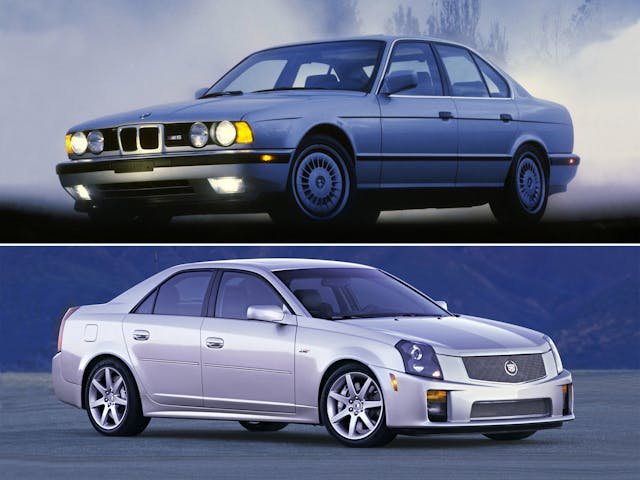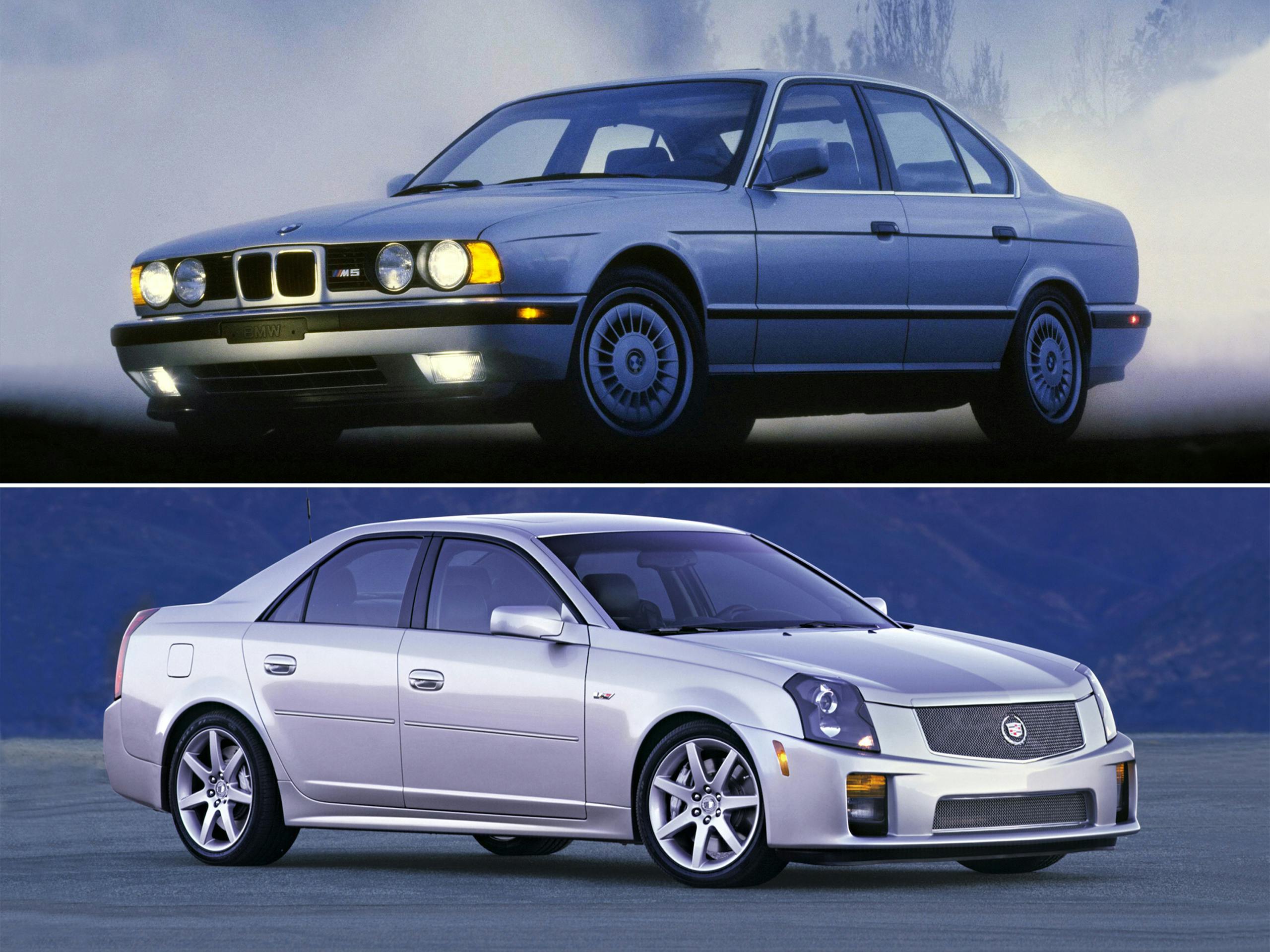Media | Articles
4 modern alternatives to out-of-sight ’80s and ’90s classics
Used car prices are out of control, and collector vehicle values are soaring right alongside them. Even those cars and trucks hailing from the rad-era ’80s and ’90s have skyrocketed well past anyone’s expectations, with auction results and private sales continuing to break records for models that were barely turning heads just a few years ago. We’re looking at you, Merkur Scorpio.
You may feel priced out of the action, especially if you’re watching the heroes you grew up with double in value overnight. But what if there were a way to get ahead of the wave and snag a more modern and much more reasonably priced alternative that fills a similarly sized hole in your garage?
By targeting cars and trucks that offer similar flavors of fun but sit outside the eye-popping price range of the hottest ’80s through ’90s vehicles, you can get a great deal on a potential future classic. Plus, you’ll be driving something that’s a little more reliable and just as entertaining.
Here are four recent replacements for out-of-sight dream cars that won’t have you sighing with wistful regret when you turn the key.
Dreaming about: 1983–1984 Volkswagen GTI

Consider instead: 2002–2005 Mini Cooper S

The first-generation Volkswagen Rabbit GTI (and its Mk II Golf GTI successor) provided a hot hatch template that set the tone for enthusiasts eager for affordable, front-wheel-drive fun that they could drive on a daily basis. Featuring a high-revving four-cylinder engine, a lightweight chassis, and a relatively inexpensive price tag, the GTI quickly took over the cheap and cheerful segment and laid the foundation for a model that is still one of Volkswagen’s most popular options.
Marketplace
Buy and sell classics with confidence
Unfortunately, though GTIs once lay thick on the ground of used-car lots, #1 (Concours) and #2 condition (Excellent) examples of the ’83 to ’85 models now regularly trade for between $11,000 and $20,000. That’s serious money for a vehicle that’s interesting behind the wheel but which has trouble matching the performance of its later, and less expensive, successors.
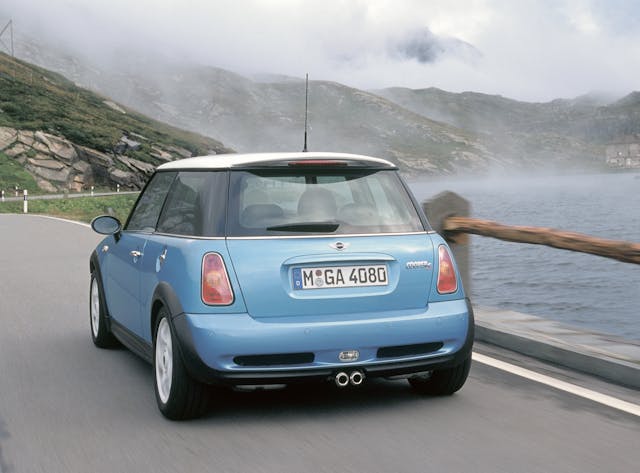
Seeking to capture that early GTI experience at a quarter of the price? The 2002 through 2005 Mini Cooper S is an intriguing portal to the days of low-mass hot-hatchery, built entirely out of modern components. The R50-generation Mini that birthed the R53 Cooper S was the first model to reach U.S. shores after the brand’s BMW takeover and, despite the two-decade gap between the cars, the Mini is only 500 pounds heavier than its also-German ancestor.
Making up for some of that extra mass is a supercharged, 1.6-liter, four-cylinder engine that’s good for 161 hp and 155 lb-ft of torque—a step up from both the 110-hp car and the 137-hp 16v edition Mk II GTI. Wheelbase and overall length are within a few inches of the Rabbit/Golf, too, keeping the packages closer than any other sporty hatch in the recent past. The best part? The Cooper S now ranges between $2600 and $5000, leaving you extra cash to address the R53’s known reliability issues (which only solidify the ’80s VW comparison, in our opinion).
Dreaming about: 1988–1989 Toyota 4Runner
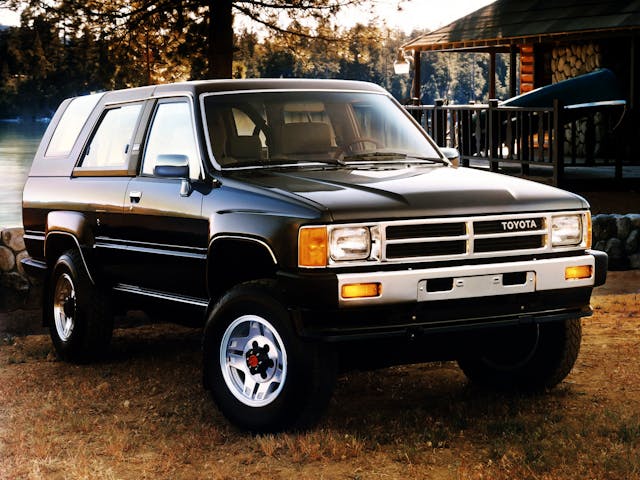
Consider instead: 2001–2004 Nissan Pathfinder
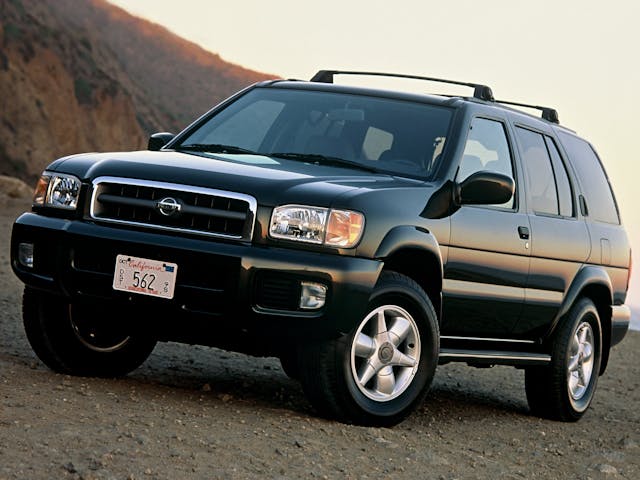
For many, the first-generation Toyota 4Runner was the default Japanese SUV of the ’80s. Featuring four-cylinder or V-6 power, along with rugged construction and go-anywhere four-wheel drive, the 4Runner helped expand the sport-utility market beyond the Big Three’s mix of small/big Blazers and Broncos.
As the family ride of many an ’80s kid, it’s no surprise that these rigs have attracted considerable attention from collectors, swept into a rising tide that has elevated a huge number of ’80s and ’90s trucks from obscurity to “ouch, you paid how much?” The final two production years of original, V-6 4Runners now cost between $14,000 in #3, or daily-driver condition, and $26,300 in #2. World-class, #1-condition examples nearly reach $40K.

There’s a secret about these Japanese haulers, however: Many of the big names of the ’90s were carried over into the early 2000s on almost identical platforms, before they were sunsetted for more crossover-adjacent fare. Of these holdovers, the most intriguing is the 2001–2004 Nissan Pathfinder.
First appearing in the mid-’90s, by 2000 the second-generation Pathfinder wore a handsome refresh and boasted an all-new, 3.5-liter VQ V-6 that boosted output to 250 horsepower and 240 lb-ft of torque, a significant gain over older 3.3-liter unit’s 170 ponies. A unique, unibody chassis that incorporates hybrid “frame rails” for additional strength makes the Pathfinder a smoother driver than the 4Runner and the 4xr system means you don’t have to sacrifice off-road capability, either. You can even find one with a manual-transmission if you scour the internet long enough. Currently, ’01 through ’04 Pathfinders trade hands for between $2500 and $5500, a substantial savings over 4Runner robbery.
Dreaming about: 1991–1993 BMW M5
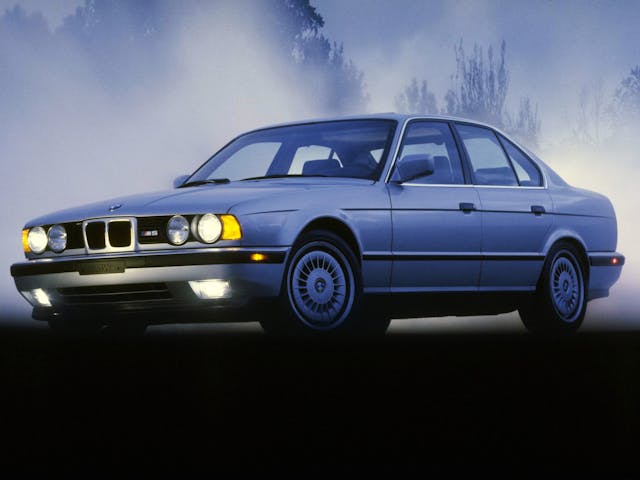
Consider instead: 2004–2007 Cadillac CTS-V

The E34 BMW M5 was the last hand-built M car, and though it languished for a decade or so after departing from American shores in 1993, it’s now one of the era’s most expensive Bimmers. If you don’t fancy shelling out $80,800 for a concours-ready example of this straight-six-powered super sedan, you can your sights a little lower and snag a $48,600, #2 condition car instead … but even if you’re willing to settle for a rough-around-the-edges, #3 car, expect to spend $27,000.
What if we told you there’s another ultra-low-production, four-door hot rod that costs less than half of a daily-driver E34 M5? Fewer than 9000 first-generation Cadillac CTS-Vs were built between 2004 and 2007, and each and every one came with a 400-hp V-8 (either an LS6 or an LS2), matched with a six-speed manual gearbox and a chassis tuned for road racing, not boulevard cruising. Surprisingly, despite their age difference and the Caddy’s slightly larger proportions, the M5 and the CTS-V’s curb weights are within 200 pounds of each other.
BMW actually built 12,254 versions of the E34 M5 (although less than 1700 made it to the United States), and given its relative scarcity it’s entirely possible that the original CTS-V experiences its own collector glow-up in the years to come. Now’s your chance to snag one for between $11,000 and $17,000, before anyone else clues in on all the stealth four-door fun.
Dreaming about: 1983–1989 Porsche 944 / 944 Turbo

Consider instead: 2003–2004 Nissan 350Z

The Porsche 944 and the 944 Turbo represent two poles of what used to be an inexpensive gateway to classic P-car ownership. For decades, the air-cooled crowd sneered at the front-engine pair, and Porsche fans dedicated to the cult of the flat-six routinely passed over the four-cylinder motors.
Today, the 944 is recognized for its delightful, easy-to-drive chassis and its classic ’80s looks, with those pop-up headlights and hatch-lip spoiler oozing cool. The modestly powered (147 to 208 hp) naturally-aspirated models are excellent momentum cars on curvy roads, while the Turbo and Turbo S (up to 250 hp) powertrains hold much potential for additional performance in the hands of the right tuner. Prices reflect the changing attitude towards the 944, with a base model valued at between $21,000 in #2 condition and $34,000 in #1. Turbos blow past those figures, valued at $38,500 in #2-condition and topping out at $80,000 in #1.

Want to split the difference with a more modern, yet nearly as classic two-door coupe? The Nissan 350Z, which first appeared in 2003, revived the JDM brand’s most famous letter, wrapping in sleek bodywork and motivating it via a 287-horsepower, 3.5-liter V-6. A six-speed manual was also in the mix, and “Track” trim levels brought a limited-slip differential and upgraded brakes.
The 350Z’s chassis is tossable and forgiving and you’ll spend a lot less on care and feeding for the more dependable Nissan that you would with the 944 Turbo. Priced between $20,000 to $30,000, with driver-quality base models falling around $12K, a #2-condition 350Z is much quicker than an entry-level 944 and on par with a Turbo costing twice as much in comparable condition.
